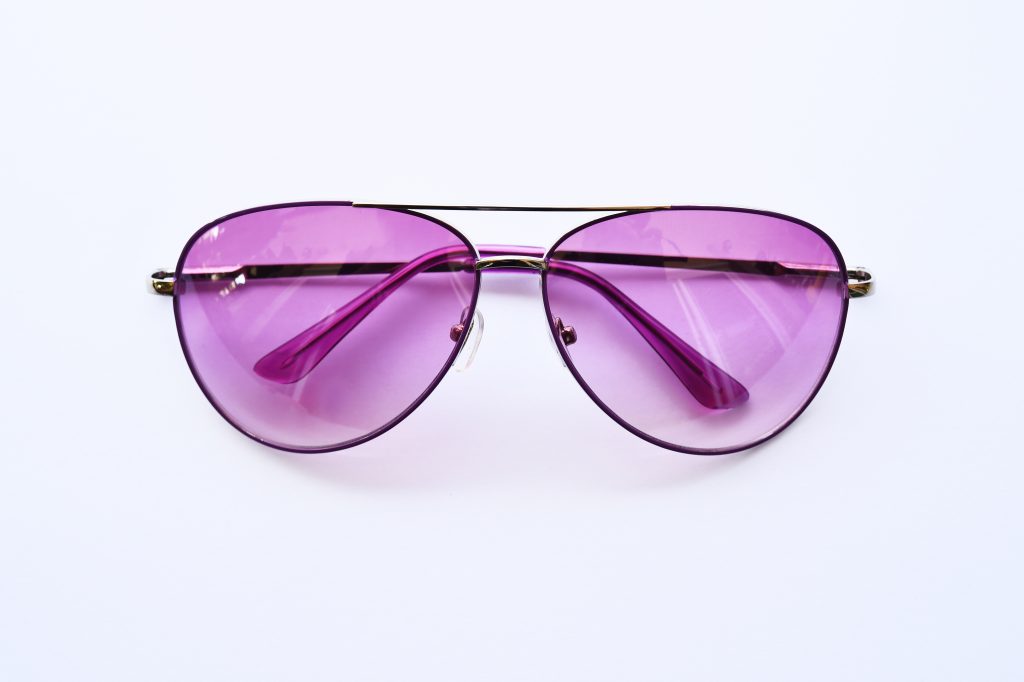“A showing of willful blindness occurs when a person suspects wrongdoing but intentionally decides not to investigate. This is enough to show constructive knowledge of trademark infringement.”
 On August 7, the U.S. Court of Appeals for the Eleventh Circuit affirmed a jury verdict from the U.S. District Court for the Northern District of Georgia finding a landlord liable for contributory trademark infringement. The jury ruled for Plaintiffs Luxottica Group, LLC and Oakley, Inc., holding that Defendants Airport Mini Mall, LLC (AMM); Yes Assets, LLC; Chienjung (Jerome) Yeh; Donald Yeh; Jenny Yeh; and Alice Jamison were liable for contributory trademark infringement under the Lanham Act for allowing their subtenants to sell counterfeit goods that infringed the plaintiffs’ trademarks.
On August 7, the U.S. Court of Appeals for the Eleventh Circuit affirmed a jury verdict from the U.S. District Court for the Northern District of Georgia finding a landlord liable for contributory trademark infringement. The jury ruled for Plaintiffs Luxottica Group, LLC and Oakley, Inc., holding that Defendants Airport Mini Mall, LLC (AMM); Yes Assets, LLC; Chienjung (Jerome) Yeh; Donald Yeh; Jenny Yeh; and Alice Jamison were liable for contributory trademark infringement under the Lanham Act for allowing their subtenants to sell counterfeit goods that infringed the plaintiffs’ trademarks.
Yes Assets purchased the Old National Village Shopping Center in College Park, Georgia, in 2004 and leased it to AMM in 2009. During AMM’s tenancy, three law enforcement raids took place in which thousands of counterfeit Luxottica goods were seized and subtenants arrested. Each subtenant denied selling counterfeit goods when AMM property manager, Greg Dickerson, inquired with subtenants after the raids took place. Luxottica also sent two letters notifying the defendants that their subtenants were not authorized to sell Luxottica eyewear, thus claiming that all eyewear with Luxottica marks were counterfeit. Dickerson made no attempt to determine whether the accused vendors were selling counterfeits, except to ask the subtenants, and even after defendants met with local law enforcement the defendants still took no action against the infringing vendors.
Luxottica filed suit against the defendants for contributory trademark infringement under the Lanham Act, with search and seizure of counterfeit Luxottica items continuing even after the lawsuit was filed. The district court denied the defendants’ motion in limine to exclude evidence, except for a motion to limit the introduction of evidence of counterfeit sales before AMM took over the property. An 11-day trial ensued, with a jury verdict holding all defendants except for Jenny liable for contributory trademark infringement. The jury awarded $100,000 in damages for each infringed mark, totaling $1.9 million in damages. The district court then denied the defendants’ renewed motion for judgment as a matter of law. In their plea to the Eleventh Circuit, the defendants appealed the verdict, the jury instructions involving application of Georgia landlord-tenant law, and the district court’s denial of the defendants’ motions in limine and renewed motion for judgment as a matter of law.
Eleventh Circuit Considerations on Constructive Knowledge
The Eleventh Circuit reviewed questions of law de novo and the denial of a renewed motion for judgment as a matter of law, affirming each issue appealed from the district court. The Eleventh Circuit found that the district court correctly determined that the evidence against the defendants was sufficient to support the jury verdict, no reversible error was apparent in the jury instructions, and district court discretion was not abused in the challenged evidentiary rulings.
Under the Lanham Act, a person may be held liable for contributory trademark infringement if that person induces or knowingly facilitates infringement. The Eleventh Circuit assumed that, without the defendants’ contest that landlords may be held contributorially liable for a subtenants’ direct trademark infringement, contributory liability extends to the landlord-tenant relationship. Looking to the Supreme Court decision in Inwood Laboratories, Inc. v. Ives Laboratories, Inc., 456 U.S. 844 (1982) for guidance, the Eleventh Circuit also held that the evidence was enough to support a jury verdict of liability, as the defendants had at least constructive knowledge of the subtenants’ direct infringement.
Inwood captured contributory trademark infringement as a two-element process that must be satisfied: 1) a person must commit direct trademark infringement under the Lanham Act; and 2) the defendant must “intentionally induce” the direct infringer to commit infringement by supplying a product or service to the direct infringer who it knows or has reason to know is directly infringing. In this case, Luxottica presented evidence to the jury that the defendants exhibited willful blindness to the subtenants’ direct infringement. According to the court, a showing of willful blindness occurs when a person suspects wrongdoing but intentionally decides not to investigate. This is enough to show constructive knowledge of infringement. Therefore, the Eleventh Circuit found that the landlord, Yes Assets, LLC, may be held contributorially liable for its subtenants’ direct infringement because it supplied a service that facilitated infringement (space, utilities, or maintenance) even with constructive notice of infringement.
Further Denial of Defendants’ Renewed Motion
As the appeal progressed, the Eleventh Circuit affirmed the district court’s ruling on the defendants’ renewed motion for judgment as a matter of law, even with defendant urging that the court follow the ruling in Tiffany (NJ) v. eBay Inc., 600 F.3d 93 (2d Cir. 2010). In Tiffany, Tiffany sued eBay for contributory trademark infringement, claiming that it allowed infringing vendors to list counterfeit Tiffany products on its website. eBay delisted infringing vendors within 24 hours of notice of infringement by Tiffany but did not have the ability to inspect every listing for counterfeit goods, even with 200 employees put to the task. Tiffany’s demand letters did not identify the specific sellers of counterfeit goods other than the ones that eBay promptly delisted, so the court in Tiffany found that eBay did not have actual or constructive knowledge of the remaining infringers and could not be held liable. In comparison, the Eleventh Circuit held that the Luxottica case was different than Tiffany because the defendants had constructive knowledge of specific vendors infringing Luxottica trademarks. The court also clarified that notice of direct infringement need not come from trademark holders themselves if knowledge of the direct infringers’ identities could have arisen from other sources. Even with a legitimate secondary market for Luxottica eyewear brands, the court found that a jury could have found that $15 and $20 glasses bearing the trademarks of glasses that generally retail at $140 to $220 a pair was sufficient evidence to alert the defendants that the goods were counterfeit. Moreover, the court held that it was reasonable for defendants to investigate the vendor booths for counterfeit goods upon notice of illegal activity. This combined with the raids, arrests, and seizures, and a meeting with law enforcement to discuss the sale of counterfeit goods at the mall, was enough to support a jury finding of constructive knowledge or willful blindness to direct infringement.
Jury Instructions
The defendants appealed the jury instruction that Georgia law permits landlords to evict commercial tenants without resort to legal proceedings where the tenant has contractually waived its right to those procedural protections. The defendants relied on Rucker v. Wynn, 441 S.E.2d 417, 419 (Ga. Ct. App. 1994), in arguing that they lacked clear evidence of subtenant defaults and therefore could have been sued for evicting the tenants. However, the Eleventh Circuit found that legal recourse was available because the tenant AMM had the power under its lease to immediately evict subtenants upon a verified written complaint of the selling of counterfeit goods, such as a copy of the search warrants accompanied by sworn affidavits. The Eleventh Circuit therefore found no reversible error in the instructions. The court held that absent copies of search warrants, the defendants could have photographed the infringing booths just as Luxottica’s private investigator did, to provide evidence of vendor breach of sublease. The court also held that property owner Yes Assets had the ability to terminate AMM’s lease for failure to comply with applicable laws in violating the Lanham Act, and in choosing not to do so was also liable for contributory trademark infringement.
Evidentiary Rulings
The defendants further appealed the sufficiency of the evidence supporting the jury’s finding of individual contributory trademark infringement of Yes Assets owner Jerome, AMM owner Donald, and mall manager Jamison. The Eleventh Circuit found that the evidence was sufficient to warrant this finding, because Yes Assets was copied on emails between a former tenant and law enforcement regarding alleged sales of counterfeit Luxottica goods on the property, Jerome was informed about Dickerson’s conversations with subtenants after the raid, Donald knew about Luxottica’s notice letters, and Jamison knew about the letters, the raids, and attended a meeting with law enforcement regarding the sale of counterfeit goods.
Lastly, the defendants appealed five sets of the district court’s evidentiary rulings. The Eleventh Circuit concluded that the district court did not abuse its discretion in any of these rulings. First, the court held that the admission of evidence of infringement obtained by Luxottica’s private investigator was not prejudicial in her ability to give reliable testimony, because her “near-contemporaneous account” was within 24 hours of her mall visit, and the destruction of her notes was done in good faith. Second, the court held that the district court was within its discretion in rearranging the exhibit of glasses purchased by the private investigator from specific booths, because it did so to allow the jury to examine the evidence in a clear and orderly fashion. Third, the court found that admission of evidence of counterfeit sales before AMM took over the mall’s lease was appropriate because it increased the likelihood that the defendants knew about direct infringement of Luxottica’s marks. Fourth, the court held that admission of evidence of alleged infringement of non-Luxottica goods was appropriate because the defendants should have been alerted to possible infringement of other goods such as those bearing the Luxottica trademarks. Luxottica also ensured that the evidence of infringement of non-Luxottica goods did not outweigh the evidence of infringement of Luxottica marks, with jury instructions reflecting this. Fifth, the court held that admission of testimony from the tenant prior to AMM was discretionary and was relevant evidence of the defendants’ knowledge of illegal activity occurring at the mall.
Ultimately, the Eleventh Circuit found that the evidence was sufficient to support a finding of contributory trademark infringement of Luxottica goods under the Lanham Act, and no reversible error was made regarding any of the issues raised on appeal.
Image Source: Deposit Photos
Image ID: 192270034
Copyright: [email protected]

![[IPWatchdog Logo]](https://ipwatchdog.com/wp-content/themes/IPWatchdog%20-%202023/assets/images/temp/logo-small@2x.png)

![[Advertisement]](https://ipwatchdog.com/wp-content/uploads/2024/04/UnitedLex-May-2-2024-sidebar-700x500-1.jpg)
![[Advertisement]](https://ipwatchdog.com/wp-content/uploads/2024/04/Artificial-Intelligence-2024-REPLAY-sidebar-700x500-corrected.jpg)
![[Advertisement]](https://ipwatchdog.com/wp-content/uploads/2024/04/Patent-Litigation-Masters-2024-sidebar-700x500-1.jpg)

![[Advertisement]](https://ipwatchdog.com/wp-content/uploads/2021/12/WEBINAR-336-x-280-px.png)
![[Advertisement]](https://ipwatchdog.com/wp-content/uploads/2021/12/2021-Patent-Practice-on-Demand-recorded-Feb-2021-336-x-280.jpg)
![[Advertisement]](https://ipwatchdog.com/wp-content/uploads/2021/12/Ad-4-The-Invent-Patent-System™.png)






Join the Discussion
No comments yet.